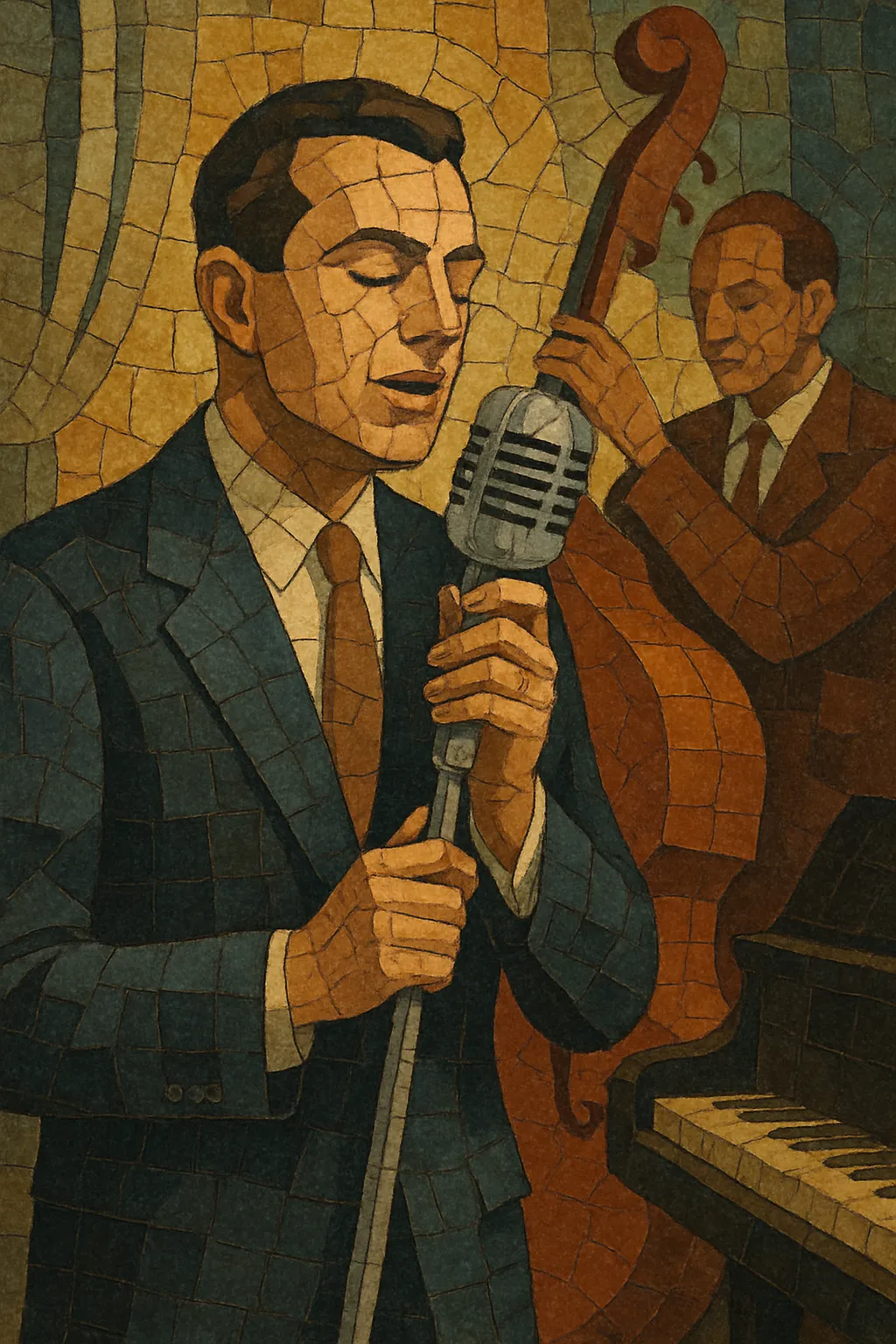
Traditional pop is the pre–rock and roll mainstream of American popular song, centered on the Great American Songbook and the crooner/orchestral style that dominated radio, records, and film musicals from the 1930s through the 1950s.
It favors memorable melodies, elegant lyrics (often about romance), and lush arrangements for strings, woodwinds, and big band rhythm sections. Singers use close‑mic "crooning" to deliver expressive, legato phrasing over jazz‑tinged harmonies and steady, unhurried grooves.
Typical forms include the 32‑bar AABA standard, with sophisticated but accessible harmony (secondary dominants, ii–V–I cycles, tasteful modulations) and an emphasis on interpretation—how the vocalist shades timing, dynamics, and diction to make a familiar song feel personal.
Traditional pop grew from Tin Pan Alley songcraft, vaudeville stages, and Broadway/film musicals. The advent of electrical recording and the microphone in the late 1920s enabled intimate "crooning," shifting popular singing from stage projection to nuanced, close‑mic delivery. Big bands and studio orchestras provided graceful backdrops as jazz harmony and swing feel seeped into mainstream song.
Radio networks, jukeboxes, and Hollywood propelled the style. Composers like George & Ira Gershwin, Cole Porter, Irving Berlin, and Rodgers & Hart/Hammerstein supplied a steady stream of standards. Singers such as Bing Crosby and Frank Sinatra, supported by arrangers (e.g., Nelson Riddle, Axel Stordahl, Billy May), defined a conversational, impeccably phrased approach over plush orchestration. The 32‑bar AABA form, subtle modulations, and tasteful jazz extensions became hallmarks.
Rock and roll reoriented youth taste, but traditional pop remained vital on LPs, television variety shows, and in supper clubs. Many artists adapted toward easy listening and early adult contemporary, while the repertoire of "standards" crystallized in jazz and vocal music.
CD reissues, film/TV syncs, and new torchbearers (from Harry Connick Jr. to Michael Bublé) revived interest. Holiday albums and "songbook" tributes keep the idiom visible. Its melodic craft, lyric sophistication, and orchestral polish continue to inform easy listening, lounge, adult contemporary, and refined strains of modern pop.

